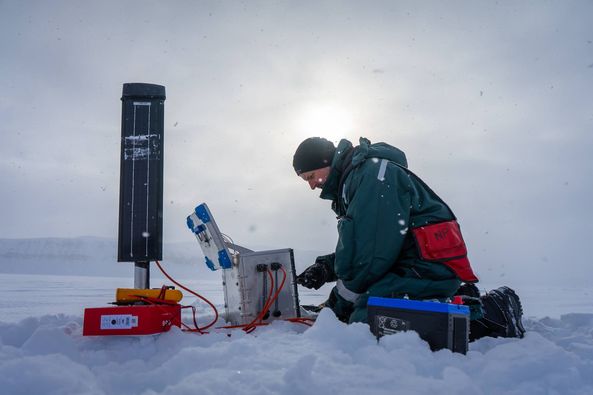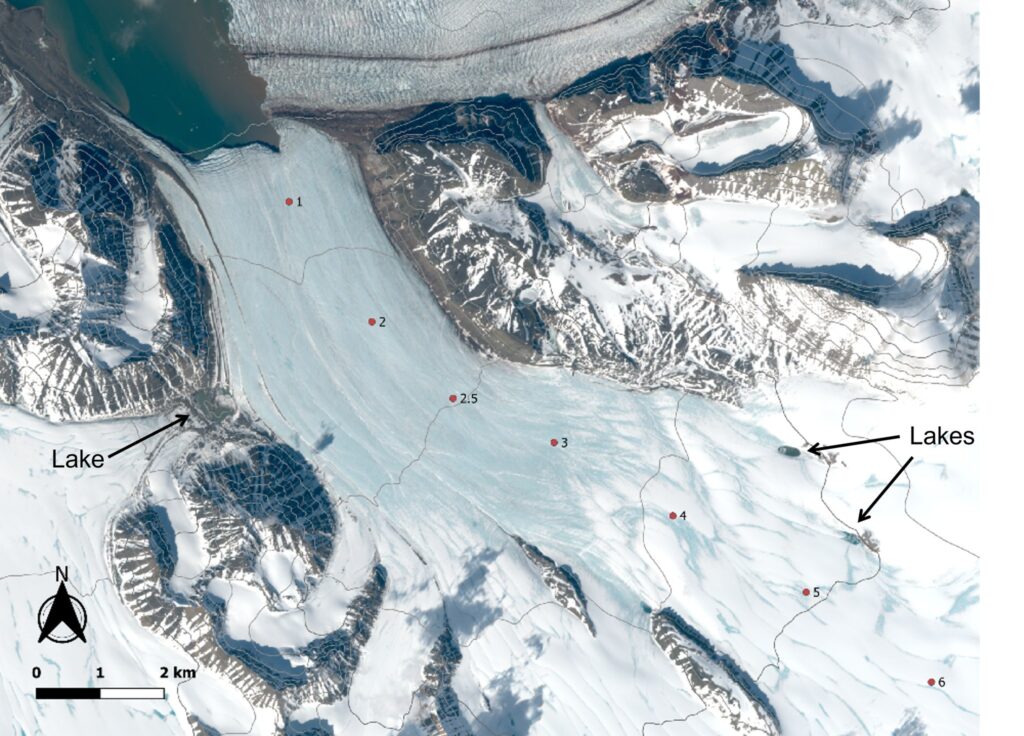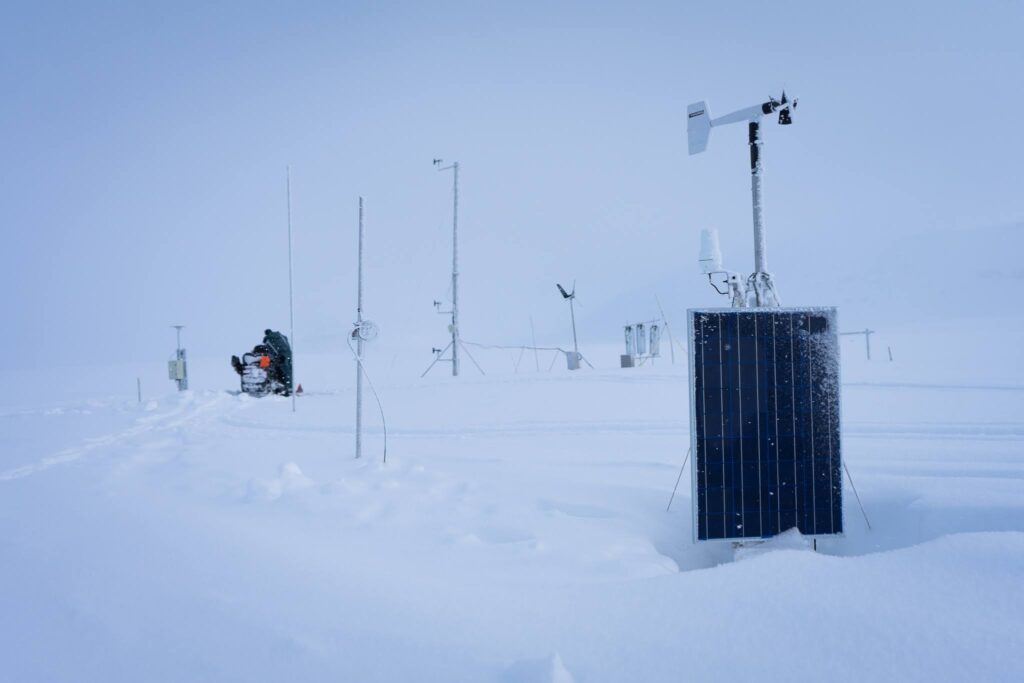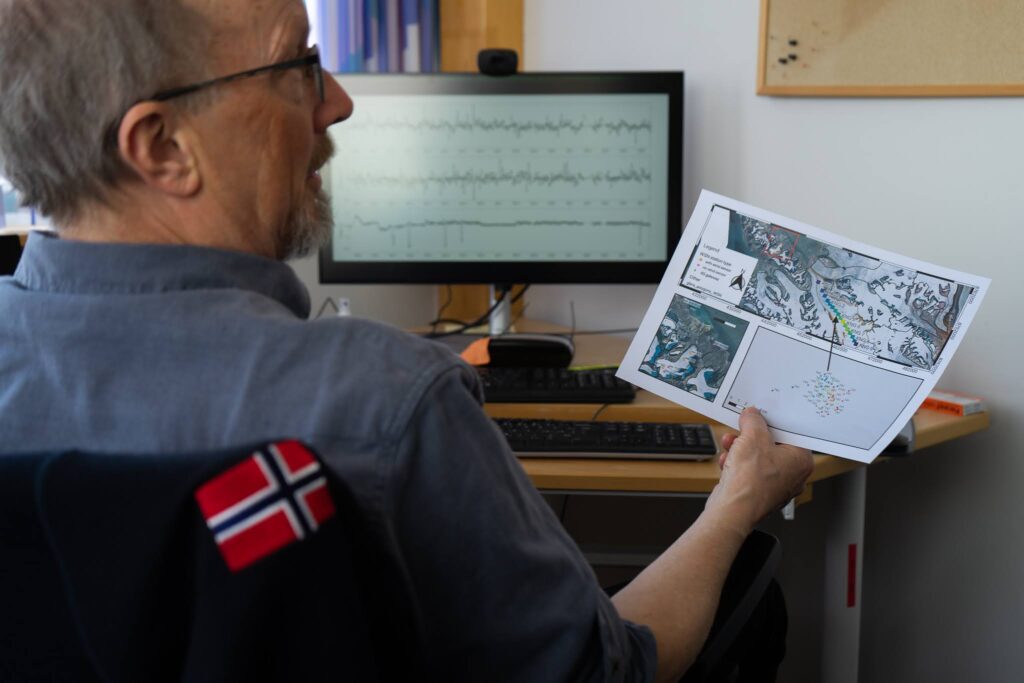Glaciers moving faster than normal
Precision GPS shows that the glacier Kongsvegen is moving faster than normal! The Kongsvegen glacier is located by the Kongsfjord near Ny-Ålesund on Svalbard. It is common for glaciers to move faster in summer, but this year the velocity increased earlier than usual. High temperatures in Ny-Ålesund in recent weeks affect that the glacier is already up to summer speed (approx. 30 cm per day).

Foto: Joanna Sulich/The Norwegian Polar Institute.
Precision-GPS reports the position with 2 cm accuracy several times an hour. It provides a very good basis for calculating the speed of the glacier.
The instruments in the picture were developed by Ceslav Czyz at the Norwegian Polar Institute.
Through this link you can see how the mass balance of Kongsvegen has changed over time, in addition to other glaciers, on Svalbard: www.mosj.no/en/climate/land/mass-balance-glaciers.html
Monitoring on the glacier

The poles on Kongsvegen are measuring-stations that the Norwegian Polar Institute use to gather data about the glacier movement and mass balance. What happens with Kongsvegen also happens with other glaciers, both on Svalbard and in Greenland. By monitoring Kongsvegen, we learn about how glaciers develop in the Arctic. Melting glaciers affect the local climate, wildlife and plant life on Svalbard.
A map over Kongsvegen can be found here: https://toposvalbard.npolar.no/?lat=78.82852&long=12.71944…
Poles on the move

Pole 6 is one of the measuring-stations located on the glacier. Here you will find a weather station, solar cell, GPS and instruments for measuring solar radiation. All the data from this is sent regularly to the researchers at the High North Research Centre for Climate and the Environment (The Fram Centre) in Tromsø. Pole 6 has moved one meter in recent days.
Normal winter speed for the glacier is 5 centimeters a day. Summer speeds can be 20-30 centimeters a day and up to 40 centimeters a day when it rains.
Seeing the glaciers speed in real time

Glacier researcher Jack Kohler is very happy after looking at the first data from pole 6. The system works!
Temperatures in Ny-Ålesund have been well above freezing point since the end of May, which has had a dramatic effect on the glaciers. It is common for the speed of Kongsvegen to increase in the summer, but this year it started extra early. In 2020, it was very hot in Svalbard, and the glacier accelerated on 21 June. This year (2022) it started on June 6. The research team lives in Ny-Ålesund and drives out to the glaciers around Kongsfjorden when they work. The field work takes place in April and August.
You can read more about the research in Ny-Ålesund here: www.npolar.no/sverdrup/
Did you find what you were looking for?